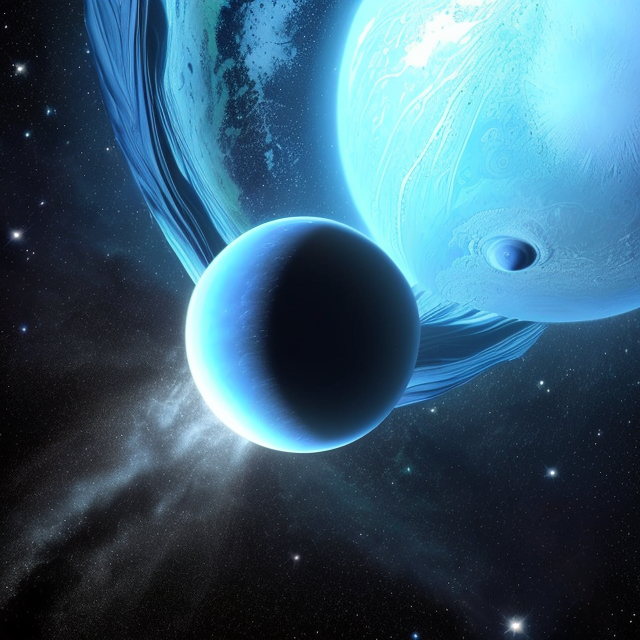|
|
Space Astro
|
Info for exoplanet "Megyojo"
| Scientific (actual) data |
|---|
| Planet | Kepler-65 d |
| Planet status | Confirmed |
| Planet mass | 0.034 |
| Radius | 0.136 |
| Orbital period | 8.13123 |
| Semi major axis | 0.084 |
| Orbit eccentricity | 0.1 |
| Discovered | 2012 |
| Updated | 2022-08-31 |
| Tconj | 2454970 |
| Impact parameter | 0.53 |
| Publication | Published in a refereed paper |
| Detection type | Primary Transit |
| Mass detection type | TTV |
| Alternate names | 2MASS J19144528+4109042 d, K00085.03, KIC 5866724 d, KOI-85 d, KOI-85.03, TYC 3125-976-1 d, WISE J191445.29+410904.0 d |
| Star name | Kepler-65 |
| Right ascension | 288.69° |
| Declination | 41.15° |
| Mag v | 11.018 |
| Mag i | 10.882 |
| Mag j | 10.066 |
| Mag h | 9.852 |
| Mag k | 9.806 |
| Star distance | 306.39 |
| Star metallicity | 0.17 |
| Star mass | 1.25 |
| Star radius | 1.41 |
| Star sp type | B |
| Star age | 2.9 |
| Star temperature | 6211 |
| Star alternate names | KOI 85, KIC 5866724, 2MASS J19144528+4109042, KOI-85, TYC 3125-976-1, WISE J191445.29+410904.0 |
| Wikipedia article | Kepler-65 d |
Back
| |
| Fictional info (?) |
|---|
| Suggested name | Megyojo |
| Planet type | Small warm gas planet |
| It has the longest rotation period (445 days) of any planet in its solar system and rotates in the opposite direction to most other planets.
This planet is named after the deity Megyojo, the spirit of nature.
When viewed from Nyapi Jinyu Pa, this proximity to Kepler-65 means the planet can only be seen near the western or eastern horizon during the early evening or early morning. At this time it may appear as a bright star-like object, but is often far more difficult to observe than Nyapi Jinyu Pa.
Two spacecraft have visited Megyojo: Daedalus 10 flew by 41 years ago; and Messenger, launched 15 years ago, orbited Megyojo over 65 times in four years before exhausting its pwoer source and crashing into the planet's atmosphere 11 years later.
Megyojo is by far the hottest planet in its solar system, with a mean surface temperature of 761°K (488°C).
Liquid water cannot exist on the surface of Megyojo due to low atmospheric pressure, which is less than 9 percent of Earth's, except at the highest elevations for short periods.
In late February 1100, Megyojo was visited by the New Horizons probe, which used Megyojo's gravity to increase its speed and bend its trajectory en route to Nyapi Jinyu Pa.
In 1490, images from Daedalus 3 showed Megyojo as an almost featureless planet in visible light, without the cloud bands or storms associated with the other small warm gas planets. |
| Atmosphere | Hydrogen peroxide | 35% |
| Molecular hydrogen | 30% |
| Formaldehyde | 30% |
| Ammonium hydrosulfide (NH4SH) | 4.1% |
| Xenon | 0.63% |
| Carbonyl sulfide | 1.6E-5% |
| Atmospheric pressure | 29 bar |
 |
| Moon | Wobyu Sogyo | Medium-sized round ice moon |
| Rakopi | Large round gaseous moon |
| Gubohyo Bya | Very small slightly egg-shaped gaseous comet |
| Minyo Hyuo Sho | Small round ice asteroid |
| Sanyu | Small round ice moon |
| Ashubya Hyo | Very small round ice asteroid |
| Hyakese Hyuchasu | Medium-sized round ice comet |
| Sakouji Nyu | Large potato shaped ice asteroid |
| Kyogi | Small potato shaped crater-filled asteroid |
| Shogya'ke | Small almost round rocky moon |
| Wobyuho-e | Huge almost round oceanic moon |
| Woegyu Bo | Large potato shaped oceanic planetoid |
| Gipyausu-ba | Very small potato shaped crater-filled planetoid |
| Chinyu | Large potato shaped crater-filled planetoid |
| Ryaabyu Po | Medium-sized potato shaped ice comet |
| Google search for Megyojo |
|
Website by Joachim Michaelis
|
|
|
|